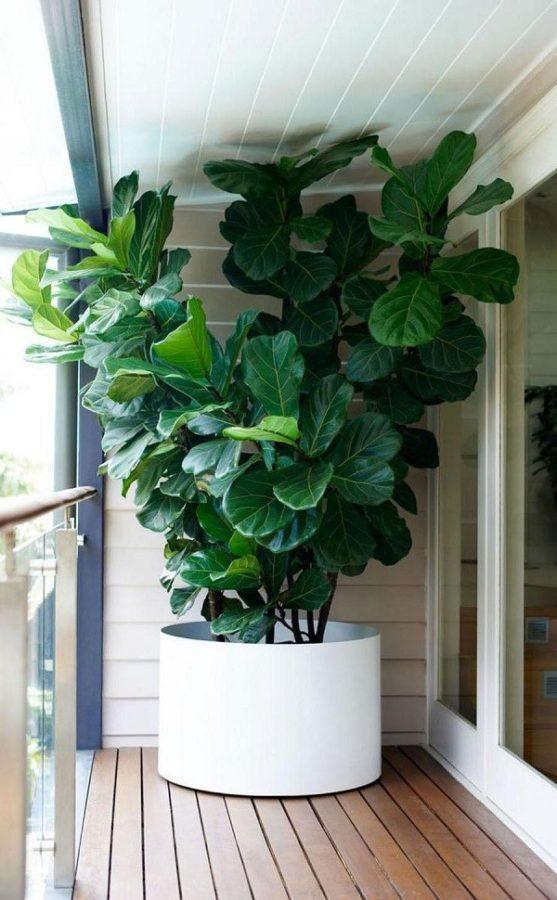Plant for large rooms - lyre ficus
 Most florists when they say "ficus»Imagine a tree with small leaves. However, there are among them such varieties, the size of which can only be envied. For example, among the "indoor giants" it is worth noting the lyre ficus - one of the tallest plants of this species.
Most florists when they say "ficus»Imagine a tree with small leaves. However, there are among them such varieties, the size of which can only be envied. For example, among the "indoor giants" it is worth noting the lyre ficus - one of the tallest plants of this species.
On this topic:ficus Benjamina home care with photo + crown formation!
What does ficus look like in nature and at home?
The native land of lyre ficus is the tropics of Africa. There it reaches simply enormous sizes - there are specimens about 30 m in height.However, in a closed room, the total height of the bush rarely exceeds 3 m. Agree, for an apartment this is already a lot.
Basically, the plant has an erect shape, but if it does not have enough light, it turns into an epiphyte (it lays down and braids neighboring crops, stretching out in search of light).
What else is special about this ficus? In addition to the gigantic size of the tree, it has no less large leaves. The length of the leaf plate reaches 50 cm, and the width is 25 cm. They are painted dark green and have a glossy sheen. The edges of the leaf plates are slightly wavy due to the fact that along the central vein they seem to be pulled together. Throughout the sheet, side veins diverge to the sides - they are lighter in color, so the pattern is clearly visible. The main trunk of an adult plant has a rough surface and is covered with brown bark with a gray tint. The leaves are attached on small petioles up to 7 cm in length.
Since the shape of the leaf resembles a violin, the plant is often also called the violin ficus.
Ficus varieties
Thanks to the work of breeders, several types of lyre ficus have been bred. To date, it has been possible to obtain even dwarf varieties that are most adapted for home cultivation, but at the same time retaining the other species characteristics.
So, most often there are such varieties:
- Little Fiddle is a medium-sized bush, the maximum height does not exceed 1.5 m, and the length of the leaves is no more than 25 cm;
- Bambino is the smallest ficus with a height of only 15 cm, but with characteristic curled leaves and a pattern on them, it bushes well.
For lovers of tall and slender plants, the ficus lyre Columnarius is suitable - it is distinguished by its rapid growth and columnar shape.
Features of home growing
So that the leaves do not lose their rich color, this type of ficus needs strict adherence to the temperature regime and watering rules. In summer, you need to remove the flower in a cool room, where the air temperature does not rise more than 25 degrees Celsius. In winter, the plant also needs coolness - the maximum values on the thermometer should be no more than 20, but not less than 13 degrees Celsius.
Lyrate ficus is very fond of moisture, but this does not mean that it needs to be poured all the time. It is best to spray the leaves frequently and wash them regularly.
To stimulate branching, in March it is necessary to cut off the tops of the shoots (above the internode).
It is better to determine the place of residence for a flower pot once and for all - the flower does not tolerate permutation well. It is necessary to choose a bright room (preferably an eastern one), otherwise the ficus will grow poorly and stretch, and the leaves will fall off.